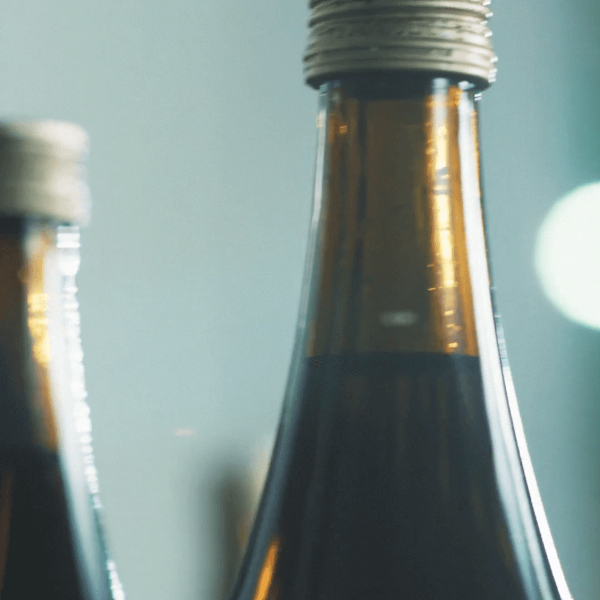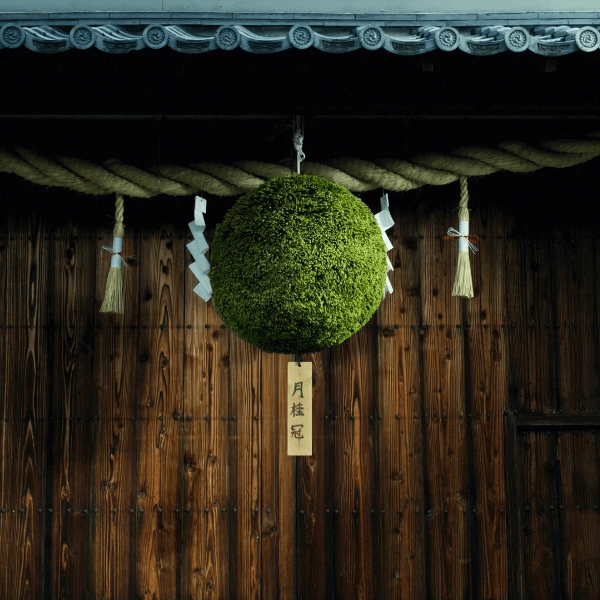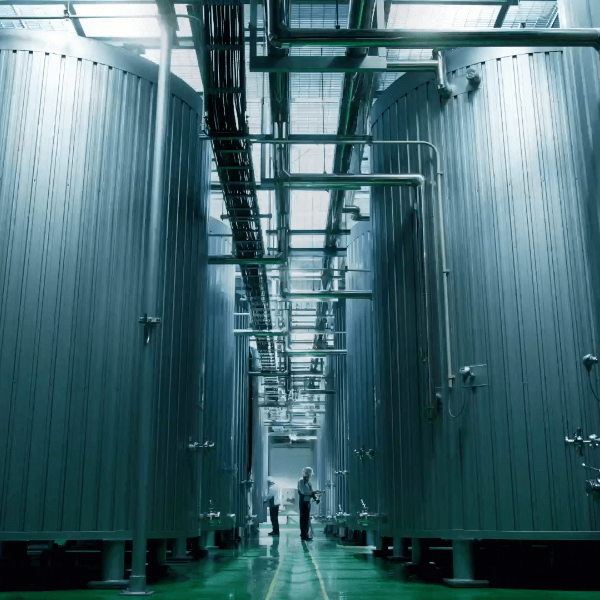A Walk from Inari to Momoyama

The area from Fushimi Inari to Fushimi Momoyama offers very easy access today, thanks to the Keihan Line, the Kintetsu Line, the JR Line, as well as numerous major roads criss-crossing Fushimi. From Kyoto Station, taking the JR Nara Line to Momoyama Station or the Kintetsu Kyoto Line to Momoyama-Goryomae Station only takes a dozen or so minutes. New bus routes were added in March 2016, linking Kyoto Station and Chushojima or Fushimi Momoyama, the heart of the sake-producing area, via the Fushimi Inari Shrine, helping make touring the southeastern part of Kyoto even more convenient. Visitors can get around the area on foot in combination with walks through the natural scenery, and can get in touch with nature if they head further afield, out of the urban area, and go hiking through the gentle hills at the southern end of the Kyoto basin.
Fushimi/Fukakusa Trail Course
The Kyoto Trail hiking course which circles around the Kyoto basin is divided into several smaller courses. The Fushimi/Fukakusa Route was set up in 2014. This route covers from Mt. Inari to the sake town of Fushimi Momoyama via Fukakusa and Fujimori. The route is shown in the “Kyoto Trail Course Official Guide Map: Higashiyama” (published by the Kyoto Alpine League. Inquiries: Kyoto City Industry and Tourism Bureau MICE Promotion Office).
This next section will describe the major famous sites along the Fushimi/Fukakusa Route. The codes in the square brackets (like [F35]) correspond to the trail marker numbers on the “Kyoto Trail Course Official Guide Map: Higashiyama.”
Fushimi Inari Shrine and Mt. Inari [F35]
Fukakusa Yabunouchi-cho, Fushimi-ku, Kyoto
Pass through the “Thousand Torii” of the shrine and climb to the summit area of Mt. Inari along the pilgrimage route, then head towards Momoyama. Coming down the hillside you will encounter peaceful farmland, bamboo groves, and houses.
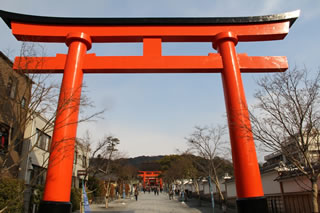
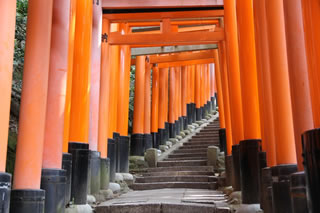
Oiwa Shrine [F20⇒F19]
Fukakusa Mukaikehara-cho, Fushimi-ku, Kyoto
From the Oiwa-Kaido road, head along the pilgrimage path to Oiwa Shrine, following the vermilion torii. At the shrine, which stands on the slopes of the hill, a torii with a design carved into it by the traditional Japanese artist Insho Domoto. After continuing along the mountain path for a while, you will reach the Mt. Oiwa lookout point.
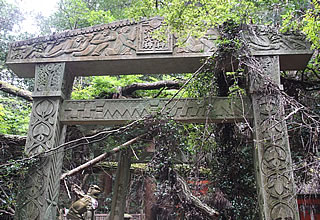
*Note that when surveyed in November 2015, there were some fallen trees blown over by a typhoon in front of the Oiwa Shrine. Please check the latest information and local warning signs before walking into the hills.
Mt. Oiwa Lookout Point [F18]
Fukakusa Mukaikehara-cho, Fushimi-ku, Kyoto
From here you can look out over from Kyoto to Fushimi and, far in the distance, the skyscrapers of Osaka.
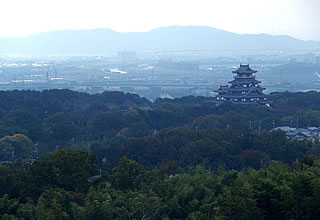
Furu-Gokogu Shrine [NW of F15]
Fukakusa Okamedani Furugoko-cho, Fushimi-ku, Kyoto
When Toyotomi Hideyoshi built Fushimi Castle, the Gokonomiya Shrine was relocated to the “demons' gate” direction, north-east as seen from the keep. This area is now a sacred site known as Furu-Gokogu, or “Old Gokonomiya Shrine.”
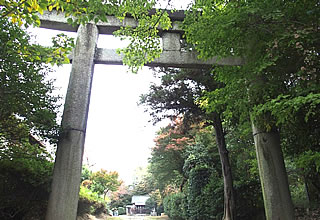
Yajina Pass [F13]
Fukakusa Okamedani Tsuruga-cho, Fushimi-ku, Kyoto
Passing through Fushimi Fujimori from Kyoto, you will come to a street, Sumizome Street, leading towards Rokujizo and Uji. There is a stone pillar at the pass with “Right to Kyoto” and “Left to Rokujizo” engraved on, showing that this has been a main street for many centuries. A plateau area extends from the flat area around the Fujimori Shrine at the foot of the hill.
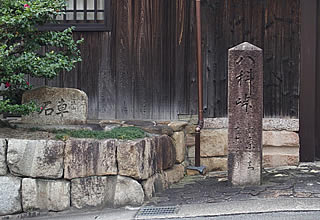
Site of Kuroda Nagamasa's Suburban Residence [F12]
Exact Location Uncertain: Fukakusa Okamedani Tsuruga-cho, Fushimi-ku, Kyoto
A stone pillar stands on the site thought to be where Nagamasa, the eldest son of the famed Warring States lord Kuroda Kanbei, used to live.
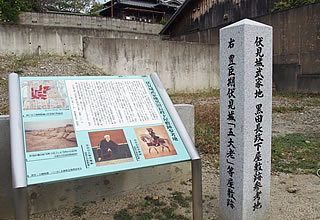
Fushimi Kitabori Park [F11⇒F8]
Momoyama-cho Okura, Fushimi-ku, Kyoto
This park has been built to take advantage of the old moat that ran along the north side of Fushimi Castle. A walking path goes around the park along the inner side of the moat, while a small stream flows down the bottom of the moat.
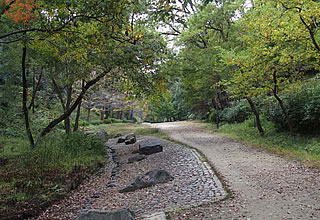
Fushimi Momoyama Castle [F7]
Momoyama-cho Okura, Fushimi-ku, Kyoto
This modern replica, designed to look like Fushimi Castle as it was in Hideyoshi's time, was erected in 1964 as a symbol of Fushimi. It is surrounded by a park.
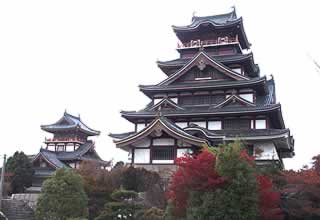
Emperor Kanmu's Tomb [North of F5]
Momoyama-cho Nagaikyutaro, Fushimi-ku, Kyoto
Emperor Kanmu ordered the construction of the new capital of Nagaoka-kyo in 784, then changed the located to Heian-kyo, the present-day Kyoto in 794. This emperor is intimately connected with the foundation of Kyoto.
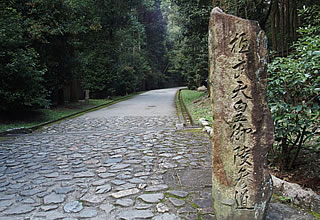
Fushimi Momoyama Tomb [Head up the path on the way from F5 to F4]
Momoyama-cho Kojosan & Suruga, Fushimi-ku, Kyoto
Located in the Mt. Kojo area where Fushimi Castle once stood. This tomb was built in 1912 for the Emperor Meiji. Round on top with a square base, this huge tomb measures more than 60 m on a side. There is a wonderful panorama of Uji to the south from in front of this imperial tomb.
JR Momoyama Station [Southeast of F3]
Momoyama-cho Nabeshima, Fushimi-ku, Kyoto
The fourth station along the JR Nara Line, counting from Kyoto Station, it was opened in 1895. As the nearest station to the Fushimi Momoyama Tomb, it was once busy with people coming to offer their respects to the emperor. The photo on the left shows Momoyama Station as it was in 1931, when Fushimi sake was loaded here onto goods wagons for shipping around the country (taken from Gekkeikan's 1931 publicity film, “The Chosen Ones”). The photo on the right shows what the station looks like now.
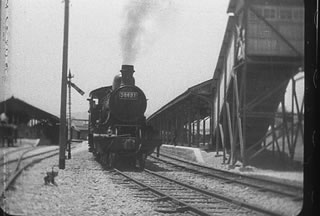
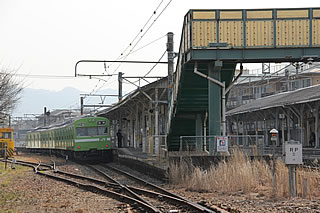
Gokonomiya Shrine [F2]
Gokogumonzen-cho, Fushimi-ku, Kyoto
This is the chief guardian deity of the whole town of Fushimi, and enshrines the soul of the Empress Jingu. The name “gokonomiya” comes from the legend that scented water gushed forth from this place and was able to cure diseases. If you wet the special “mizukake uranai” fortune paper with this fragrant water (gokosui) the fortune appears on the paper, something which is perhaps not surprising for a water-based shrine.
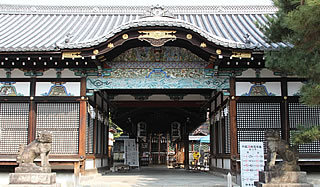
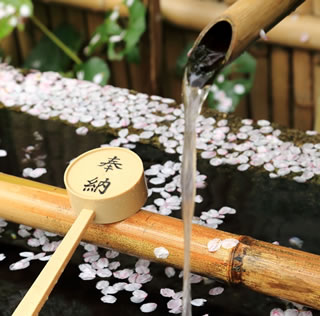
Fushimi Momoyama [F1]
Kyomachi 3-chome, Fushimi-ku, Kyoto
Heading west from in front of the Gokonomiya Shrine, you will pass under the elevated Momoyama-Goryomae Station on the Kintetsu Line and over the level crossing by Fushimi Momoyama Station on the Keihan Line to reach a covered shopping arcade. There are seven shopping arcades in this area, including this Otesuji Shopping Arcade that runs east-west, and they are always busy with people throughout the day. There are numerous shops and restaurants around here, making it a good place to rest after a pleasantly tiring hike.
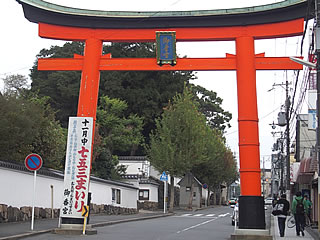
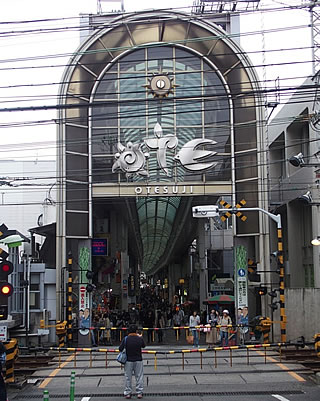
Fushimi Momoyama: Where Memories of History are Strong
Anyone who visits Fushimi Momoyama can see the streetscapes that retain their old historical appearances. The present road system was laid out starting at the end of the 16th century, when the castle town was developed. Canals branching off rivers like the Horikawa, once the outer moat of the castle, and the Uji flow through the town, and walking paths have been developed alongside them. There are many historical sites to see, such as ones connected with Takayama Ukon, the Christian daimyo who was recently beatified by the Pope, the site of the Terada-ya Inn, the Gokonomiya Shrine with its main gate that used to be the front gate of Fushimi Gate, and the site of the Fushimi Magistrate's Office, which was responsible for administration and justice during the Edo period. The streets of Fushimi are filled with history at every turn.

▲The view of the Gekkeikan Uchigura Sake Brewery on the far bank of the Horikawa River, which was once the outer moat of Fushimi Castle, is a beloved landmark in Fushimi tourism. You can enjoy the view of the sake breweries from either the jikkokubune (traditional small boats to transport goods and people) or the walking path along the river.
Otesuji Area
The part of Ote Street reaching west from in front of the Gokonomiya Shrine is called “Otesuji,” and runs east-west though the central part of Fushimi Momoyama. This area is filled with shops and restaurants, especially in the shopping arcades.
From Otesuji, heading into the roads leading south will take you to where the sake breweries are concentrated. This area includes the Okura Main House, a brewery-sum-residence dating back to 1828, which stands to the west of the Gekkeikan head office. A large number of merchant houses were burned during the 1868 Battle of Toba-Fushimi, but the Okura house was mercifully spared the flames, surviving to this day. To its south is the Uchigura sake brewery, which was built in 1906. Along from the Uchigura, with its walls of carefully charred Japanese cedar cladding the white earthen-walled structure, the Gekkeikan Okura Sake Museum is open to the public. Here you can learn about the history of Fushimi, enjoy tasting sake or seeing the inside of a sake brewery. It is also becoming increasingly popular with overseas visitors.

▲The Oyakamassan animatronic clock immediately after entering the Otesuji shopping arcade tells the time with fancy displays. Seven times, once every hour from 1 p.m. to 7 p.m., the great doors, with a sake brewery design on them, open up to reveal famous characters, things and events associated with Fushimi. From the top left of the photo, these include a boy eating a steamed bun, Sen-no-Rikyu, Ushiwakamaru, Mori-no-Ishimatsu, Toyotomi Hideyoshi, Fushimi Castle, Princess Sen, the Hanagasa Parade, Sakamoto Ryoma, and the Shinsengumi.
Inside, some 200 items from the museum's collection of 6,120 sake production tools and equipment, registered by Kyoto City as Tangible Cultural Assets, are exhibited in galleries organized by sake production stages. There are also historical materials and sake utensils that speak of the history of the company since its founding.

▲The Gekkeikan Okura Sake Museum was opened in 1982 in a remodeled Meiji period (1909) brewery. It was opened to the public in 1987, and on March 17th, 2015, received its 2,500,000th visitor.
Fushimi, the Sake-Producing Town
The road running north-south in front of the Gekkeikan Okura Sake Museum area, where there are, a lot of restaurants and bars, as well as museums made from old breweries, is called “Sake Brewery Street” (Sakagura-dori). The road is paved with colored tarseal in an earth tone, walking paths and retro-style electric lamps have been installed, and power lines buried to create an attractive environment, where visitors can enjoy strolls through an area that retains the atmosphere of the olden days.
This is still a sake production area, and the more than twenty breweries are members of the Fushimi Sake Brewers Association. In the coldest part of winter, when winter-brewed refined sake production is in full swing, the scent of the steamed rice for the moromi fills the air, just as it has always been in the sake towns of Japan.

The line of willow trees, weeping cherries, Somei-Yoshino cherries, Thunberg's meadowsweet, hydrangeas and other plants near the sake brewery allow people to enjoy the changes of the four seasons. You can visit nearby historical sites as you wander along the riverbank.
From spring to autumn, jikkokubune and sanjikkokubune (traditional small and medium-sized boats to transport goods and people) for tourists travel up and down the river. The jikkokubune depart from the west side of the Gekkeikan Okura Sake Museum and turn around at the Misu Lock Gate, which has been redeveloped as a park. The Misu Lock Gate was established in 1929 to allow boats to navigate the 4.5 m height difference between the Horikawa and Uji rivers. It fell out of use in the 1960s, and is now used as a terminal for tourist cruises.

[Exploring Fushimi: Reference Works on Inari and Momoyama]
- Kyoto Heian Bunkazai, “Fushimi Castle Ruins (Shigetsu Castle) Excavations; Materials for Local Explanatory Talks,” June 20, 2015
- Kyoto Alpine League, “Kyoto Trail Course Official Guide Map: Higashiyama,” Kyoto City Industry and Tourism Bureau MICE Promotion Office, November 2014
- Tatsusaburo Hayashiya, “Momoyama,” Kyoto Momoyama Lions Club, October 15, 1976
- Fushimi Inari Shrine Office, “The Kannabi or Sacred Site of Mt. Inari, the Prayer Mountain,” Oinari Supplemental Issue, 2nd Edition, May 15, 2015
- Tadashi Yamamoto , ed. “Fushimi Kagami Reprint vol. 1&2,” Momoyama High School History Research Club , April 1, 1974
- Tadashi Yamamoto, “Fushimi, Home of Henon Bamboo,” Kyoto Society of Economics , 1988
- Tadashi Yamamoto, “History Tours of Fushimi, Kyoto” (New Edition), Yamakawa Shuppansha, 2003
The designs used in this corner include images photographed by Gekkeikan with the permission of the Fushimi Inari Shrine (Fukakusa Yabunouchi-cho, Fushimi-ku, Kyoto) and the Gokonomiya Shrine (Gokogumonzen-cho, Fushimi-ku, Kyoto).

